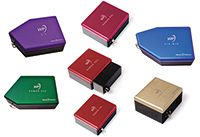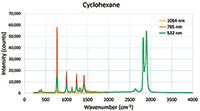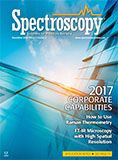Wasatch Photonics
Company Description
Wasatch Photonics designs and manufactures high throughput fiber-coupled and free space spectrometers and systems, delivering the best price to performance on the market, particularly for applications requiring high speed and sensitivity. The Wasatch Advantage is our high efficiency spectrometer design-an innovative, very low f/# optical bench built around our proprietary Volume Phase Holographic Grating technology. The resultant increase in throughput, sensitivity, and speed dramatically broadens the potential of promising optical spectroscopy techniques like Raman and spectral domain OCT. The Wasatch Difference lies in how we collaborate with our research and OEM customers to unlock and deliver that potential.

Chief Spectroscopic Techniques Supported
- Raman and variants (SERS, SORS, CARS)
- Absorbance, Transmission, & Reflectance
- Fluorescence/Photoluminescence
- Optical Coherence Tomography
- Hyperspectral Mapping/Spectral Line Scanning
Markets Served
- Research & development
- Biomedical, Chemical, & Pharmaceutical
- Chemical analysis
- Pharmaceutical
- Process monitoring & Quality control
- Homeland security & Anti-counterfeiting
- Environmental monitoring & NDT
- Semiconductor & materials science
- OEM manufacturing
Major Products/Services
Raman: Fiber coupled and free-space spectrometers and systems for more excitation wavelengths than anywhere else: 405, 532, 638, 785, 830, 1064, and 1550 nm. Let our expertise and testing determine the optimal wavelength for your sample.
VIS and NIR: High efficiency spectrometers spanning 400-2500 nm, ideal for low light applications. Our systems enable high data collection rates for kinetics monitoring and high-throughput quality control.
Fluorescence: Spectrometers and systems designed to capture and keep more photons for better S:N at the sample, resulting in incredibly low limits of detection for biological studies, photoluminescence, and NIR studies.

Facility
Wasatch Photonics Systems Division facility serving the Spectroscopy and OCT markets is located in Durham, NC, while our proprietary VPH gratings are developed and manufactured in Logan, Utah.

Wasatch Photonics
Systems Division
4022 Stirrup Creek Drive Suite 311
Durham, NC 27703
TELEPHONE
(919) 544-7785
WEB SITE
NUMBER OF EMPLOYEES
20
YEAR FOUNDED
2000

Modernizing Fishmeal Processing: Cutting-Edge NIR Technology Enhances Quality Control
November 26th 2024Researchers from the University of Iceland and Matis Food and Biotech R&D in Reykjavík have unveiled an innovative study leveraging near-infrared (NIR) spectroscopy for real-time monitoring of fishmeal and oil processing. This advanced method promises to optimize product quality and streamline production, particularly in lipid composition and protein concentration—key markers for high-value fishmeal products.
Analyzing Oxygen Vacancy Using X-Ray Photoelectron Spectroscopy
November 26th 2024A new study published in the Journal of the European Ceramic Society introduces three XPS methodologies for accurately quantifying oxygen vacancies in metal oxides, challenging traditional misinterpretations and advancing material science research.
Using Raman Spectroscopy and Surface-enhanced Raman Spectroscopy to Detect Cholesterol Disorders
November 25th 2024Researchers have developed a highly sensitive method using Raman and surface-enhanced Raman spectroscopy (SERS) with gold nanoparticles to accurately quantify intracellular cholesterol.
Using NIR Spectroscopy in Low-Level Petroleum Hydrocarbon Detection
November 25th 2024Researchers in China have developed a novel workflow for near-infrared reflectance spectroscopy (NIRS or NIR) that enhances the detection of low-level petroleum hydrocarbon pollution in soils, revealing new diagnostic features and significantly improving sensitivity for environmental monitoring.